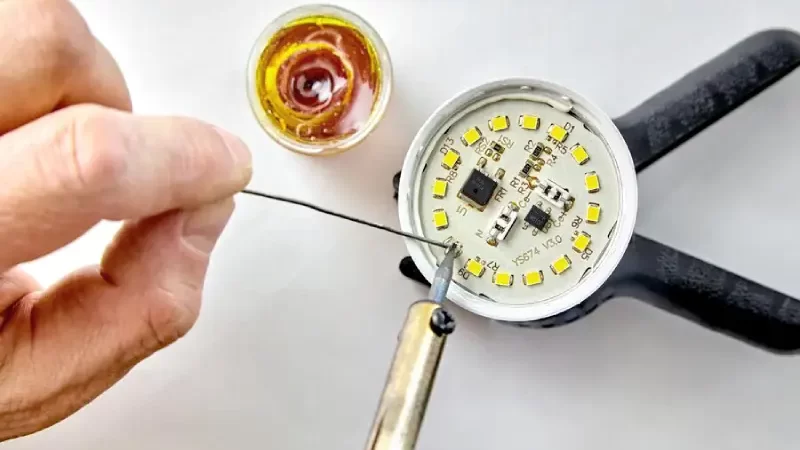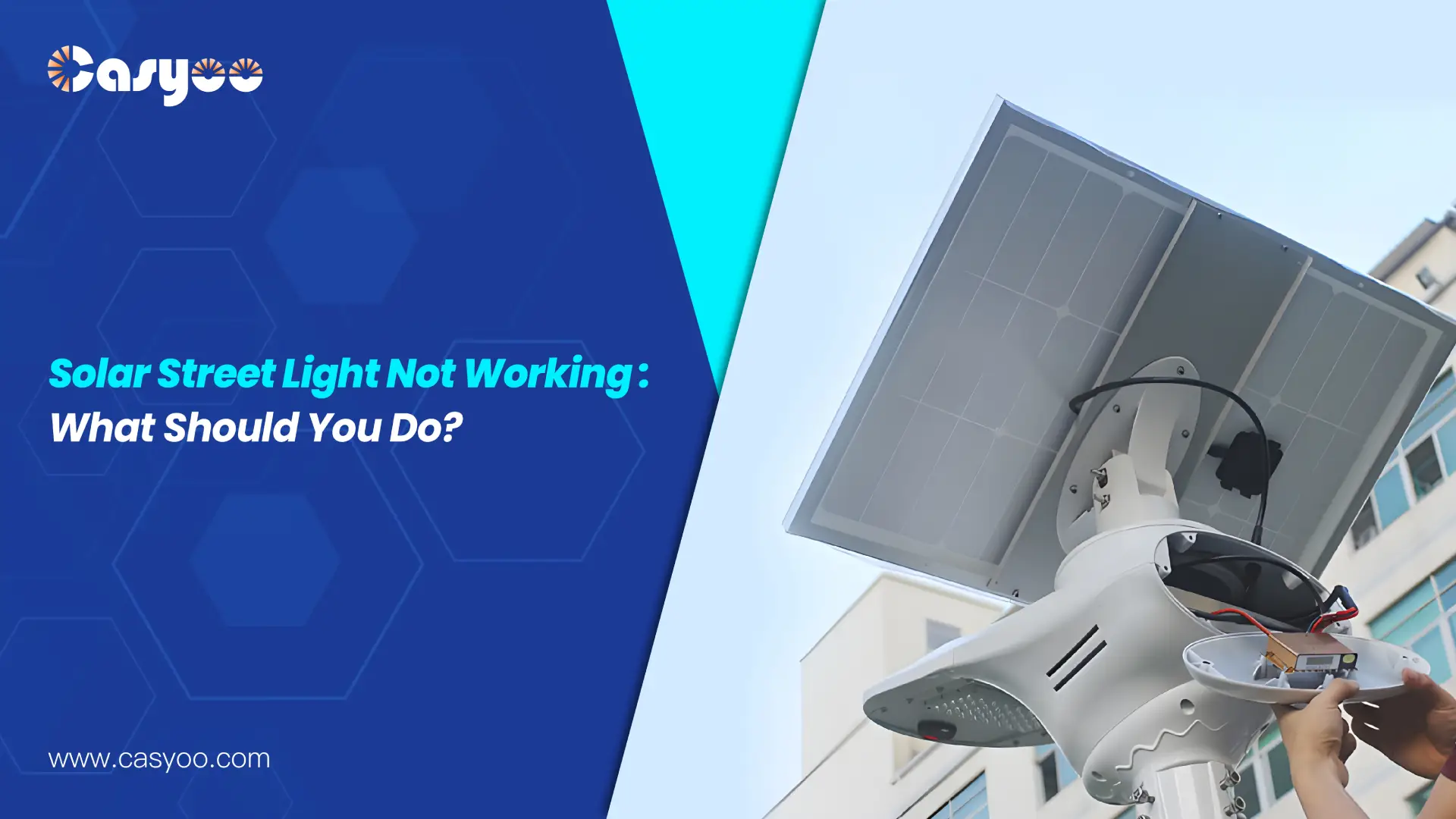Unlike ordinary street lights, whose problems can be related to the whole grid, if a solar street light fails, all you need to consider is the light itself. Common issues with solar street lights include: solar street light not working at all, flickering, turning on during the day, sensors not functioning, etc. Read this passage and learn easy ways to find the problems and troubleshooting solar street lights effortlessly!
Solar street light not working: what should I inspect?
Step1: If you use the solar street light for the first time
Before putting the light into use, you need to put it under the sun and charge it for at least 5 hours.
Step2: Controller troubleshooting
During the day, observe whether the controller indicator light is in charging status. If not, the controller may be damaged. When you are sure that both the light source and the battery are working normally, disconnect the negative terminal of the solar panel. The light should light up in one minute. If it does not light up, the controller may be damaged, and you need a new one.
Step3: Light source
Check whether the lamp beads are securely welded and whether any lights are missing. Check to see if the lamp head is fully bright after resoldering the loose lamp beads to the circuit board. Replace the lamp beads that are still not lit.

Step4: Solar panel inspection & maintenance
Is the solar panel’s surface free of dust or other extraneous objects? Clean and maintain it regularly.
Are there any buildings or trees obstructing the street lights?
Is the solar panel facing the sun? If it is facing another direction, the sunlight may not be enough.
Are there other light sources above the panels? If there is, you should take them off, because they will make the solar street light charge all the time.
Check whether the connection to the solar panel is tight and if there is anything blocking the panels. If the voltage detected by the voltmeter is unstable or there is no output voltage, the solar panel needs to be replaced.
Step5: Battery
After testing using a multimeter, if you find the battery’s voltage exceeds the rated voltage, the battery is functioning properly. If it is less than the rated voltage, think about whether wet days are to blame for any power outages. You need to replace the battery if it is not because of the rainy weather. Here is a video about how to replace the solar street light battery. For your safety, it is better to replace the battery under the guidance of a professional.
Flickering street lights: what to check?
Low battery power
Insufficient battery power in solar street lights will make the voltage unstable, making the lamp flicker. On rainy days, the battery may only be charged for 2 to 3 hours each day, which is below the ideal range of 4 to 6 hours. In such conditions, it’s normal for the lights to flicker. The aging of the battery will also cause its capacity to decrease, and the power will be consumed too quickly to ensure stable lighting.
Check the wiring
Another cause of flickering solar street lights may be the wiring. It is possible that the interface of the circuit is in poor contact, or the energized metal material inside the circuit has been worn out. You need to replace the worn circuit with a new one in time.
Are the LED lights working normally?
Make sure there are no loose lights and that the lamp beads are securely welded. You can fix the lights that are not functioning by resoldering them, and If they are still not bright, you need to replace them. When there are too many broken beads, you need to replace the entire board or the lamp.
How to fix flickering solar lights?
- Replace weak or old batteries: Determine battery health with a multimeter then replace it when your reading shows a voltage level below its rated capacity.
- Inspect and repair wiring connections: Inspect electrical connections for all components then replace wires which are frayed, corroded or loose since they create intermittent power supply issues.
- Repair or replace damaged LED lights: Look for damage on all LED beads then reattach loose solder connections. Replace the entire light module when multiple LEDs fail to work.
- Clean the solar panels thoroughly: Clean all dust, snow, and other possible obstructions from the charging panel to optimize its efficiency.
- Reset or replace the controller: Perform a controller reset according to manufacturer instructions.
Why are my solar lights coming on during the day?
Photocell reset methods
The problem may lie in the light sensor that controls the lighting, so you can first try to reset it. There are different ways to reset the solar street lights, and common methods include: (a) pressing the reset button for a few seconds to reset; (b) connecting the controller to the computer with a data cable and then performing the reset operation on the software; (c) disconnecting the battery, waiting for a few minutes, and reconnecting it.
Environmental factors (snow/dust)
If the solar panel is covered by heavy snow, dust, etc., the output voltage of the solar panel will be lower than a certain value, and the solar street light will be triggered to light up.
Loose connections or broken wires
Loose connections or broken wires between the solar panel and the battery can hinder the storage and release of power. Therefore, we need to check whether the connecting cable is intact and whether the connection is tight. If you find there is a problem with the cable, you can try to reconnect it or replace it with a new one.
Timer not working properly
If your solar street lights use timers for automatic lighting, when the seasons change, you need to reset the timer. In the summer, the daytime is longer, so it is possible that the lights keep lighting up after dawn.
Sensitive photocell
If the photocell is particularly sensitive to light, it may misjudge the light on rainy days, cloudy days, etc., causing the light to turn on during the day. You can change the circuit resistance to reduce sensitivity. It is also possible that there is a fault in the software of the sensor, so you need to reset or replace it.
Conclusions
Solar street light not working is the most common problem with solar street lights. To solve this problem, we can first make sure that the surrounding area is suitable for the street lights to work normally, and then check the components of the solar street lights one by one, as well as the wire connection. You can do the same thing when you find the solar street light flickering or turning on during the day. To keep the maintenance process safe and simple, it is recommended to contact professionals or producers to offer help. You can also find us to learn more about the problems with solar street lights and find lights that are not likely to fail!




